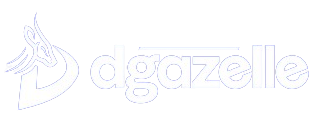How to Quicky Increase E-commerce Conversion with Simple A/B Testing
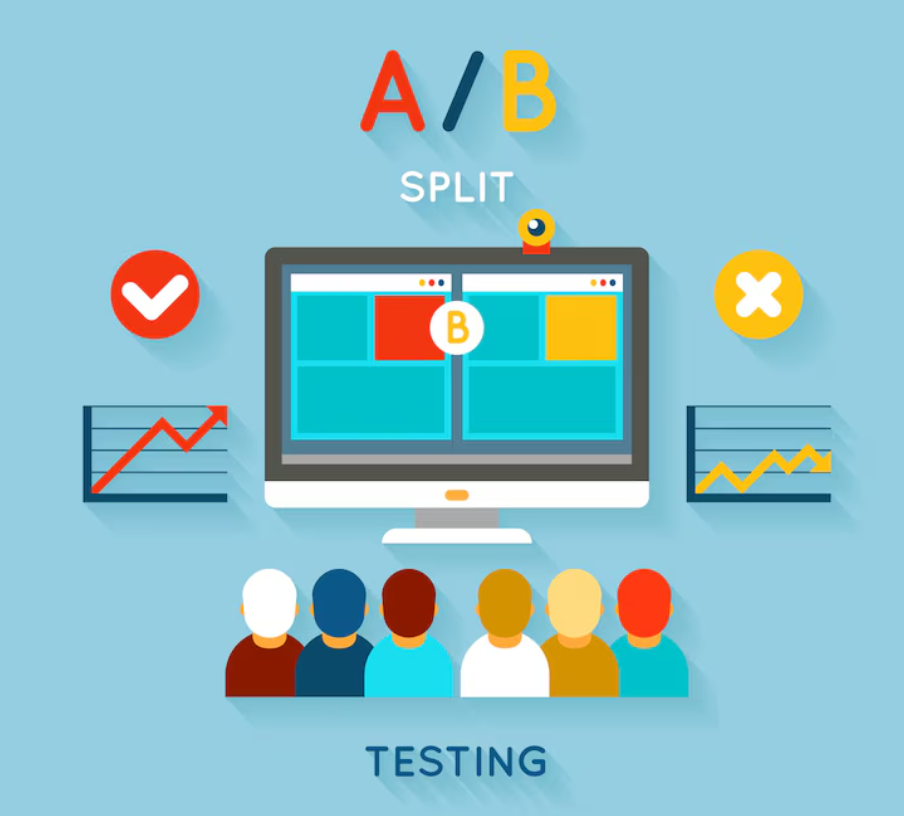
Before launching your campaigns, it’s a good idea to create many variations of anything. This is where A/B testing comes into play. It aids in optimizing the success of marketing initiatives designed to increase website visitors. Many marketers are not using A/B testing effectively, despite the fact that it is one of the most effective and proven techniques to evaluate your marketing efforts and conversion funnel. What do they not have? Is it worthwhile? We are available to address any additional queries you may have! What is A/B Testing? Simply said, A/B testing is an experimental procedure that compares two versions of website elements, such as a landing page, exit-popup, sidebar, navigation menu, or any other marketing asset, in order to assess the performance differences. It is also known as split testing or bucket testing. To determine which version of the element maximizes conversions and drives the selected business metrics, different segments of website users are presented the two versions of the element. Let’s examine the specifics of A/B testing. Why Is A/B Testing Actually Necessary? The first step in marketing is to create a website or landing page. After the design is complete, you must choose the strategies that will boost sales and conversions. Here’s when A/B testing comes in handy. A/B testing can benefit your company in the following ways: One of the most popular methods for conversion optimization nowadays is A/B testing. Its growing popularity is matched by the expansion of tools for conducting A/B testing and analyzing the outcomes. Key Elements of A/B Testing for Higher Conversions Not all A/B testing components yield the same results. To boost conversions, focus on testing impactful elements. Call-to-Action (CTA): Your CTA drives action, influencing whether visitors purchase, sign up, or engage further. Test variations like background color, text, and placement to see what improves conversions. Headlines & Copy: Headlines are the first thing visitors see. If they aren’t engaging, visitors may leave. Ensure they are concise, attention-grabbing, and clear. Test different fonts, styles, and messaging to find what resonates with your audience. Popups & Overlays: Popups can be effective when used correctly. Test different designs, copy, and animations to find the best balance between grabbing attention and avoiding annoyance. Subject Lines: A compelling subject line is critical for email marketing success. With an average open rate of 22%, experiment with phrasing, questions, emojis, and power words to boost email open rates. Images & Videos: Visual content is a major marketing tool, with 49% of marketers considering it essential. Test different visuals, such as infographics, videos, and product images, to see what enhances user engagement. Landing Pages: Landing pages are vital for promoting products and services. Use heat maps to track user clicks and test different layouts, product descriptions, and testimonials to optimize conversion rates. Social Proof: Reviews and testimonials are powerful conversion tools. Test various forms of social proof, such as star ratings, customer quotes, or badges, and experiment with their placement and format to find what works best for your audience. Types of A/B Testing After covering A/B testing, let’s explore other testing methods. Split URL Testing: Unlike A/B testing, where minor front-end changes are made, split URL testing involves designing a completely new version of the web page. Traffic is divided between different URLs to compare their performance, helping determine which version converts better. Multivariate Testing: This method tests variations of multiple page elements simultaneously to find the best combination. It’s more complex and ideal for advanced marketing strategies, allowing marketers to save time by testing multiple elements at once. Multipage Testing: This type of testing evaluates changes to specific elements across multiple pages. In Funnel Multipage Testing, entire sales funnel pages are redesigned and tested. Classic Multipage Testing focuses on adding or removing specific elements like testimonials or images to assess their impact on conversion rates. These testing techniques offer more advanced options for optimizing website performance, complementing traditional A/B testing. Step-by-Step A/B Testing Guide to Improving Lead Generation & Conversions Rate A/B testing offers a methodical way to determine which of your marketing campaigns performs better. But it must be carried out using a clear procedure. The following procedures are part of the A/B conversion rate testing. Select a variable and establish objectives and KPIs You have to conduct research and make conclusions before you can conduct an A/B test. You can test as many aspects as you like, but you must first prioritize which elements should be examined first by choosing those with the highest payout. To ensure that every version is handled equally, you have to configure the test’s parameters. After determining the variable, you must select your success metric. Are conversions your goal? Shopping cart disappearance? Rate of bounces? Sales? When choosing the objectives and carrying out your tests, you must eliminate as many “gut feelings” and presumptions as you can. Predefining your constants and variables can help you focus on the right things and prevent you from seeing misleading results. Choose the Page and A/B Test Elements Start with the most significant or popular webpage you have. This might be your best-performing landing page or homepage. Whichever path you take, make sure it’s directly related to your metrics. Once the page has been chosen, analyze every element to see what can be enhanced, including the navigation menu, popup window, CTAs, images and videos, reviews, case studies, and so on. Make sure you make a small change to the current content to observe how it affects metrics. Prioritize the pieces based on what you believe will have the biggest impact on conversions. Produce Alternatives Make a variation based on the above hypothesis and compare it with the existing version. To improve your analysis of the findings, just make the changes you decided upon in the previous stage, and only one change at a time. For instance, alter the button size, text, font, color, and CTA when testing your popup window. You can then modify the backdrop picture or input areas. Keep
Turn Clicks into Loyal Customers with Unmatched Online Presence Optimization

We use digital devices for eight hours or more every day. That is over half of the day. more than the majority of us do. Additionally, we each have a distinct online persona: we are gamers enthusiasts, professionals on LinkedIn, social butterflies on Facebook, alter personalities on Reddit, and consumers Therefore, having a strong online presence is essential for any type of business, whether it is service-based, physical, or online. Furthermore, this is not limited to e-commerce. The epidemic has expedited the expansion of e-commerce, but it has also increased support for small businesses. It is still true that 97% of customers use the internet to look up and learn about local businesses. However, the notion of a significant online presence changes along with the internet. You’ll discover all the information you require in this comprehensive guide. What does an online presence mean to you? Internet presence is both what you might believe it is and isn’t. It’s possible to exist online, but it doesn’t mean you’re present. Your presence is a more comprehensive layer that depicts your company in its whole, per: So while an online existence may get you on the map, an online presence tied to your visibility, credibility, and reputation. Without a strong online presence, you really don’t have one at all. It’s all or nothing in the noisy world of cyberspace. But before we get into the tactics and strategies, let’s back up that bold statement. Why you need a strong online presence The more possibilities you have to increase brand recognition and enhance your reputation, the more ways you can position your company in front of your target audience with high-quality experiences. However, having a good web presence also has other advantages for your company. How to increase your online presence with your website Regardless of how a potential customer learns about your business—from social media, advertising, listings, direct mail, friends, or even passing it by while traveling—their first instinct will always be to visit your website. Calling or visiting the business is much less enticing than browsing your site on your own terms and swiftly obtaining the information they need, which is why 56% of customers won’t consider a business without a website. And that’s a stat from 2017, so the percentage has most likely grown and been further accelerated by the pandemic. So with that being said, here’s how to use your website for an optimal online presence. 1. Get a modern, attractive site Nowadays, customers are so demanding that it’s almost preferable to have no website at all if you don’t have a nice one. As a matter of fact, 75% of customers acknowledge that they base their opinion of a company’s credibility on the appearance of its website. 2. Use SEO while keeping in mind the most recent changes. Only 49% of small firms spend in SEO, as you may have seen. Or that just 18% of small firms say they have no intention of engaging in any kind of targeted SEO activity, such as keyword research, content development, or link building?SEO is a free method of being on Google’s first page, which is the epitome of an online presence. When executed well, it’s a gift that never stops. However, it does require time. 3. Boost your keyword targeting with a professional and niched down blog. There isn’t much room for keyword optimization on your website’s main pages (homepage, about, pricing, products/services, contact), except from your service and location. The objective is to reduce the amount of text to the most important details that visitors are searching for, and you don’t have much text to work with. With a business blog, you can target specific keywords in each article and optimize each one to rank for them, giving you the chance to show up in search results for a ton of different searches that your potential consumers are doing at different points in their journey. Increased traffic to your conversion-optimized website and increased trust are also directly correlated with more first-page appearances, which also indicates a stronger online presence. How to increase online presence with social media Given social media’s large user bases and sharing features, which turn it into an amplification tool, using it to boost your online presence makes perfect sense. We also know that your SEO might be impacted by social signals. Furthermore, 91% of consumers who follow a brand on social media will visit its website, 89% will make a purchase from the brand, and 85% will suggest the brand to a friend or family, per Sprout Social. 4. Limit the number of platforms to only what you can handle Being present online is more about quality than numbers. Based on your bandwidth, choose the platforms that your audience uses and keep the number of platforms you use to a minimum. It is preferable to have one or two highly engaged accounts rather than multiple ones with little activity. Some platforms to take into account are: FacebookInstagramLinkedInInstagramSnapchatPinterestTwitterYouTubeTikTok 5. Think audience, not followers Gaining more followers doesn’t make your online presence better. Instead, a more visible you gain a larger following. Thus, concentrate on building a loyal, specialized following of people who are drawn to and qualified for what you have to give. More user-generated material and more likes and comments on your posts will result from this. In case you were unaware, marketing initiatives that use user-generated content yield 29% greater conversion rates compared to those that do not. A vibrant page with fewer followers is preferable to one with many followers who don’t provide much value. 6. Post with emotion for shareability If you want your content to appear in consumers’ feeds via social algorithms, you need to create high-quality pieces that generate engagement. Quality alone, though, is insufficient. When they read your material, you want your followers to be moved to the point that they are motivated to tell others about it. In your captions, use sentimental language and expressions. Incorporate emoticons. Make use of powerful data
Strategic Spending: Capitalizing on Your Website Design for Long-Term Gains

What a company or any brand spends in creating or updating its website is known as website development costs. These costs can vary accordingly. A basic website can be put together for the cost of a small program and of writing the content. One may also spend a great deal of money on a website with custom-designed graphics and interactive features. How much an organization spends on website development costs depends on the total business it can expect from a well-presented website. It will also affect the organization’s reputation and overall profit. It is an adaptable tool that accomplishes a number of tasks, including promoting your business, increasing sales, and encouraging client interaction. Due to the perception of high expenses, investing in website design may appear intimidating for many organizations, particularly small and medium-sized firms (SMEs). Still, a well-thought-out investment in your website can yield significant long-term gains. In this article, we’ll go over how to make the most out of your website by keeping a design that changes with your business, making strategic design decisions, and weighing the costs and benefits of your initial investment. Understanding the Value of Website Design The Role of First Impressions It takes less than a second for users to form an opinion about your website. This split-second judgment is driven largely by visual elements. In the digital age, first impressions have a direct impact on user trust. 94% of users’ first impressions are design-related. If your website looks outdated or difficult to navigate, users may question the credibility of your brand, leading to higher bounce rates. Design also taps into user psychology. The layout, color schemes, typography, and images all influence how visitors feel about your business. 38% of users will stop engaging with a website if the layout is unattractive. In contrast, well-crafted visuals can increase user retention by creating a sense of familiarity and professionalism. Incorporating psychology-driven design elements helps foster trust, resulting in higher engagement and potential conversions. Website Design as a Business Asset Many business owners underestimate the long-term value of quality website design, seeing it merely as an expense rather than an asset. In reality, a well-designed website can directly support business goals. For instance, companies with a user-centric website design can improve customer satisfaction, which in turn boosts revenue. As a business asset, your website contributes to customer acquisition, retention, and overall brand growth. Several case studies highlight the correlation between design improvements and increased return on investment (ROI). Improved navigation and enhanced mobile responsiveness have shown a positive impact on sales metrics. By viewing website design as an ongoing business asset, you position your company to reap long-term rewards. Key Elements of Effective Website Design A well-designed website isn’t just about aesthetics; it’s about creating a user-friendly experience that encourages interaction. Key design principles include simplicity, consistency, and clarity. Users should find it easy to navigate, with intuitive menus and clear calls-to-action guiding their journey. Additionally, loading speed affects both user experience and search engine optimization (SEO). Google’s algorithm factors page speed into rankings, and studies have shown that slow load times can result in a 7% drop in conversions. Tools like Google PageSpeed Insights can help you evaluate your website’s performance and identify areas for improvement. Cost-Benefit Analysis of Website Design Investments Initial Costs vs. Long-Term Savings Upfront website design costs may include hiring professionals, purchasing software, and securing hosting services. However, these costs are offset by long-term savings. For example, investing in a well-optimized design reduces bounce rates, leading to more user engagement and sales. Furthermore, a thoughtfully designed site can lower customer service costs by offering intuitive navigation and self-service options for common queries. When calculating the cost of website design, consider the lifespan of the design. A website that functions well and is easy to update will pay for itself over time through reduced maintenance expenses and increased traffic. Measuring Return on Investment To fully understand the benefits of your website investment, it’s essential to measure ROI. Metrics such as page views, bounce rates, conversion rates, and average session duration can help you assess performance. Tools like Google Analytics offer insights into how users interact with your site, while Hotjar enables heatmaps to visualize user behavior. Calculating ROI from design improvements may also involve tracking revenue changes linked to design updates. For example, if your new design improves the user experience, leading to higher conversions, you can directly attribute that revenue boost to your website design efforts. Budgeting for Future Enhancements Website design is not a one-time investment. As your business grows, so should your website. Allocating a portion of your budget for periodic updates ensures your site remains functional and relevant. Technology upgrades, such as integrating new plugins or enhancing security features, are necessary to keep your site running smoothly. Building flexibility into your design budget allows you to respond quickly to new trends or shifts in user behavior. Regular updates, along with a proactive approach to design improvements, keep your website ahead of the competition. Strategic Design Decisions for Business Growth Aligning Design with Brand Identity Your website is an extension of your brand identity. Consistent branding across your website helps users recognize and trust your business. Elements such as logos, color schemes, and typography should align with your overall brand strategy. Moreover, design choices can communicate company values. For instance, a business that prioritizes sustainability might use earthy tones and eco-friendly imagery to convey its commitment to the environment. Thoughtful design ensures your website acts as an ambassador for your brand. User-Centric Design Approaches A user-centric design approach focuses on meeting the needs and preferences of your target audience. Understanding who your users are and what they expect from your website is key to creating a meaningful experience. Conducting user research, utilizing usability testing, and implementing an iterative design process can help identify areas for improvement and guide design decisions. The process of gathering feedback and refining design elements ensures that your website evolves alongside your users’ expectations.
6 unique reasons google ads are important for you as a small business owner
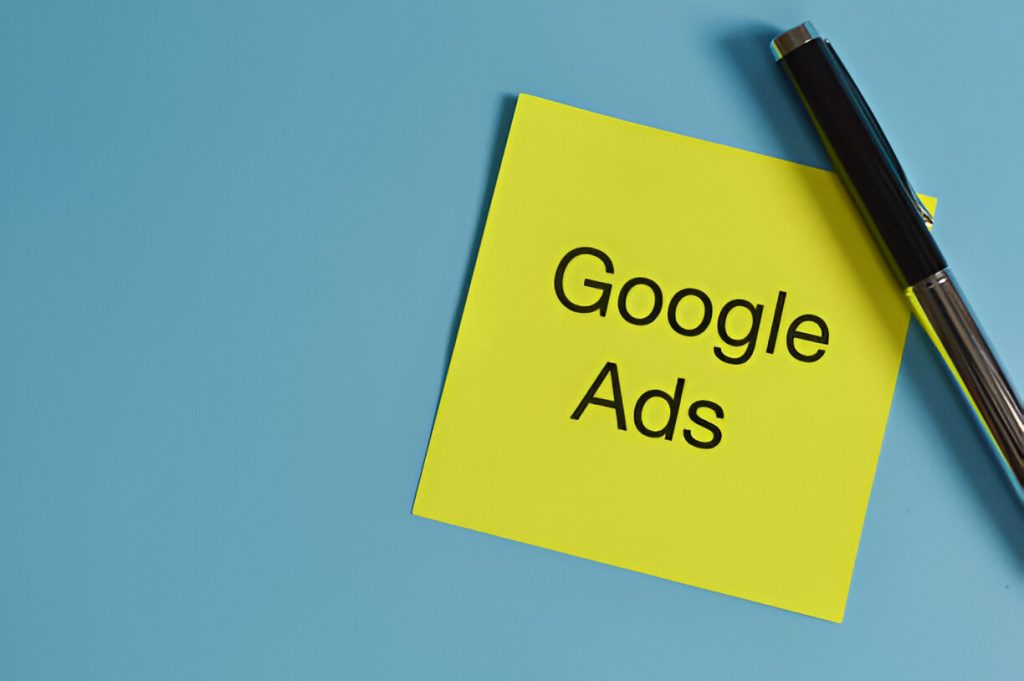
If you own a small or medium-sized business, you are aware of how critical it is to reach the proper customers with your goods or services. Selecting the best advertising solution for your business might be overwhelming with so many possibilities available. Google Ads is one platform that is not to be disregarded. We’ll go over eight reasons why companies should use Google Ads in this blog article. Google adverts, formerly Google AdWords, is a pay-per-click advertising network that enables companies to display their adverts on other websites throughout the internet and on Google’s search results page. Given that Google has over 2 billion monthly active users, it seems sense that companies of all kinds are using Google Ads to expand their consumer base. We’ll demonstrate how Google Ads may assist your company in achieving its objectives, from cost-effectiveness and interaction with other technologies, to targeted advertising and quantifiable outcomes. Thus, continue reading to find out more about the advantages of Google AdWords for your company, regardless of whether you’re a medium-sized company trying to expand online or a small firm just getting started. Tailored Advertising Utilizing Google Ads offers several advantages, one of which is the ability to target specific demographics, areas, and interests. You may make sure that the people who are most likely to be interested in your goods or services see your advertisements by using targeted advertising. This will enable you to reach the correct people at the right time, increasing the possibility that they will click on your advertisements, make a purchase, or finish the required action. For example, if you are the owner of a neighborhood coffee shop, you may use Google AdWords to target people who are searching for “coffee shop” in your city. You may make it more likely that individuals who are actively searching for a coffee shop in your neighborhood will notice your ads by doing this. You can also target particular demographics, like age and gender, to make sure the individuals who are most likely to be interested in your products or services see your adverts. Nevertheless, targeting also helps you save money by keeping you from wasting it by displaying your advertisements to consumers who aren’t interested in your goods or services. You may maximize the use of your advertising budget and achieve the most return on investment (ROI) by focusing on the appropriate audience. Measurable Outcomes Using Google adverts also offers the wonderful benefit of real-time monitoring and evaluation of the efficacy of your adverts. Google AdWords provides businesses with accurate data and statistics on their advertising campaigns, including cost per conversion, click-through rate (CTR), and conversion rate. Companies can use this data to identify which advertisements are doing well and which ones require tweaking or optimization. To increase the efficacy of your advertisement, you may, for example, modify the targeting or the copy if you notice that the CTR is low. On the other hand, if your advertisement has a decent conversion rate, you can increase the budget allotted to it in order to extend your audience and enhance sales. By looking at the Google Ads data, you can make data-driven decisions that will improve the efficacy of your ad campaigns and ultimately increase your return on investment. To increase the efficacy of your advertisement, you may, for example, modify the targeting or the copy if you notice that the CTR is low. On the other hand, if your advertisement has a decent conversion rate, you can increase the budget allotted to it in order to extend your audience and enhance sales. By looking at the Google Ads data, you can make data-driven decisions that will improve the efficacy of your ad campaigns and ultimately increase your return on investment. Economical The fact that employing Google Ads is a cost-effective way to draw in more customers and boost sales is one of its main advantages. Businesses using Google Ads engage in pay-per-click (PPC) advertising, which only incurs fees when a user clicks on the advertisement. This means that you don’t have to pay for ad space or impressions—you only have to pay for clicks on your advertisement. Because you only pay for website traffic that really arrives, it is an affordable option for businesses of all sizes. Furthermore, you have the flexibility to create and adjust an advertising campaign budget with Google Ads. Therefore, you can begin small and progressively increase your budget as you start to see the effects of your advertising initiatives. When compared to print or television advertisements, Google Ads could be a more cost-effective option for advertising. For example, a 30-second commercial during a well-known TV show can cost tens of thousands of dollars, but a Google Ad campaign can be started for as little as a few hundred dollars and modified as needed. Raise Awareness of Your Brand Google Ads is a fantastic way to increase brand awareness for your business. Advertising on Google’s search results pages and other websites across the internet will increase the visibility of your business and increase the likelihood that potential customers will see it. This increased visibility may lead to improved brand awareness and recognition, which could ultimately translate into increased sales and profits for your business. For example, you could use Google AdWords to place ads on websites that your target market commonly visits if you own a small clothing store. The possibility that potential customers will see your brand and visit your website or business will rise if your advertisement appears on these websites. Additionally, by concentrating on particular interests and demographics, you can guarantee that the people who are most likely to be interested in your products or services see your advertising, increasing the possibility that they will become customers. You can target individuals who have already visited your website by using remarketing campaigns, which are another feature of Google AdWords. You may improve brand memory and entice customers to return to your website and complete a transaction by displaying advertising
Drive Results with Google Ads—Even Without a Website

It’s not simple to run a small business, particularly if you’re new to the world of entrepreneurship and still learning the ropes. It’s imperative that you closely monitor production to guarantee that the goods you provide to clients are of the highest caliber. In addition, you have to oversee your staff, manage suppliers and stakeholders, and formulate a plan for the expansion of your business. Not to add, you have to take good care of your internet presence and carve out a solid niche for yourself. But to get your own custom website just like every small business owner or entrepreneur is not on the list of things to quickly achieve but nevertheless, your online presence is imperative so the question begging to be answered, can i use google ads without a website? AdWords Express AdWords Express is a choice designed for novice advertisers and small businesses in mind. You don’t need to be an expert in online advertising to use the solution because it is completely automated. All you need to do is register, customize your advertisement to your company’s objectives, and Google will do the rest. On both desktop and mobile platforms, they will display your advertisements on Google Maps, Google Search, and other pertinent websites. You can go on to Google AdWords if you understand the basics of web advertising and are happy with the outcomes. With the help of this solution, you’ll be able to produce various ads, select your keywords, tailor them to your company’s demands, and keep an eye on their results If I Don’t Have a Website, Where Will My Ads Link to? Facebook page To begin with, you can point potential clients to your Facebook profile as a landing page. But make sure your Facebook profile is current and has all the information potential customers could need, including your address, phone number, a description of your goods and services, and a map of your location. You can also link your advertisement to your Google+ profile if you believe that this is a better strategy to persuade people to test your products than using your Facebook account. Using Google My Business, you can easily build a business page. Google Business Profile It’s possible to run Google Ads without a website through your Google Business Profile. Google Business Profile has a website feature that allows businesses to create a basic landing page or website without the need to host a domain. This feature is perfect for small and local businesses that may not have a traditional website but want to run Google Ads and promote their services or products. Google Ads can be a very effective approach to advertise your company online. Starting an internet advertising campaign doesn’t always require a website, even though it might be a useful tool. With a Google Business Profile Website, you can provide essential information about your business, such as your address, phone number, business hours, products, and services. When you run Google Ads, you can direct potential customers to your Google Business Profile page, where they can find the information they need. How flexible is AdWords Express Ads? Google AdWords is the greatest option for you if you require in-depth monitoring and reporting, as was previously discussed. However, AdWords Express is the best option if you’ve never used internet advertising before and just want to give it a try. While this option gives you less flexibility than AdWords, you still have some control over certain aspects, such where your advertisement is seen. If you own a small Italian restaurant, for instance, users may see your adverts when they search for “Italian restaurant Sydney” and include your location. Conclusion But Google Business Profile and Facebook page can be limiting since it creates a very simple page with just a few opportunities for customization. So this approach can be particularly beneficial for local businesses just starting out, or those with very limited resources looking to establish an online presence and connect with potential customers. However, We still recommend having a traditional website hosting to fully maximize your advertising strategies. If you need help with website creation, you can schedule a free strategy call with our experts today! GET IN TOUCH Running Ads is a powerful way to promote your business online, but not every small business owner or entrepreneur know which platform that work best for their business, if you happen to be in this category, let us help you. Schedule 15 free mins call now with us
Design Professional Websites Faster and Easier with Leading No-Code Website Builder

Web development tools such as no-code website builders let users of different experience levels make websites without requiring them to know how to code. The phrase “No code required” is frequently used to emphasize this feature. This doesn’t make things any simple, despite what the public believes. However, the design and development process is accelerated and made more effective. To put it simply, in order to build a strong website, you will still need to be knowledgeable about the fundamentals (and even more advanced) of web design and development. You will achieve much better outcomes faster by using a no-code website builder, but you will still need to put in a lot of late nights to get there. For this reason, there are a plethora of design agencies like Dgazelle digital that specialize in using no-code builders and assist people and companies in building websites. Benefits of using No-Code Website Builder The goal of no-code website builders is to make things easy. Simple drag-and-drop interfaces are just one example of this simplicity. The barriers to entry that frequently discourage people with little knowledge in design from pursuing the building of their own websites are removed by this ease of use. Things to Take Into Account While Selecting a No-Code Website Builder When you decide to design your website without coding, you may want to factor in things like ease of use, the amount of accessible templates (and if they are included or if there are extra premiums on templates) and customization options. In addition to making sure your no-code tools include capabilities that increase the possibility of future growth for the demands of your website, you should search for a no-code development platform that offers simple design tools. Webflow Designers, company owners, entrepreneurs, and other potential users may all construct websites with Webflow without knowing any code. Webflow makes web development easier by enabling people, regardless of skill level, to create and publish professional-looking websites. FeaturesWebflow provides a wide range of functions. If you enjoy tinkering with the front end of websites, Webflow’s “Visual Canvas” lets users alter the HTML, CSS, and JavaScript code that makes up a website. Numerous third-party tools and services, including marketing, analytics, and e-commerce, are integrated. Pros Webflow’s user interface caters to technical users but is passable for novices. Few other platforms can match the design versatility it provides, giving users total control over CSS properties and class systems to create distinctive and eye-catching webpages. ConsWebflow has certain drawbacks for inexperienced users, albeit these are somewhat offset by the fact that it requires no coding. It can take a lot of time to get meaningful results with Webflow because users have to commit to understanding and becoming proficient with its features. CostingA variety of pricing options are offered by Webflow, each designed to satisfy the requirements of a particular user type. One feature that many no-code website builders lack is the ability for prospective customers to choose the plan that best fits their needs in terms of budget and platform scalability. For the majority of consumers, Best For Webflow is unquestionably a fantastic pick, but it’s especially worth considering for individuals with some background in web building and options for diverse user types. WordPress Originally intended for blogging, WordPress is an open-source content management system (CMS) that has expanded to accommodate a wide range of web content formats. With plugins like WPBakery and Elementor, WordPress grows from a decent content management system to one of the best no-code website builders. Features WordPress allows you to edit your content in real time with block-based editing. Additionally, WordPress has a wealth of customization choices. Users can choose from pre-selected themes or create a new one from scratch, customizing colors, fonts, layouts, and other features to fit their own tastes. Advantages WordPress provides all the tools and functionality you need to start an e-commerce store, showcase professional portfolios, or start a personal blog. Many people profit from its free and open-source nature, but there may be additional costs like hosting and plugins to get the same functionality as other no-code website builders. Cons WordPress is quite user-friendly, but there is a learning curve for those who want to learn how to use its more sophisticated capabilities. Although it may require some time to learn, WordPress is a great resource for anyone interested in learning about website creation. Because WordPress customisation requires a certain amount of technical skill, it could potentially be a drawback for some users. Costing Although WordPress is free to use, there may be additional fees for hosting, themes, plugins, and other services, such as payment processing if you operate an online store. The cost varies according to the service you select and your unique requirements. Squarespace Squarespace distinguishes itself by serving a diverse clientele, including creatives and companies. This place genuinely has something to offer everyone. You may easily establish a web presence with Squarespace! Features Squarespace offers several tools, such as drag-and-drop capability and configurable templates, that simplify the online development process. If you’re interested in e-commerce, Squarespace makes it simpler than most other no-code website builders to set up online businesses and manage inventory. Advantages Squarespace’s visually stunning templates are one of its primary selling points for design-focused web projects. One of Squarespace’s bundle options is hosting. Hosting is a huge plus if the goal is not technical in the slightest. Cons Even with all of Squarespace’s advantages, some may feel that, in comparison to other platforms, its personalization choices are a little limited. Compared to other no-code website builders, you might find their customer assistance to be less responsive. Costing Squarespace provides pricing options to accommodate various user needs and budgets. Options on the show vary from sophisticated commercial plans to simple personal plans. Wix One major participant in the ecosystem is Wix. Wix tends to draw in people who are just beginning the process of creating websites, but it also offers capabilities that let users do more than simply create
Google Ads vs. Facebook Ads: Which of them should you use as a small business owner
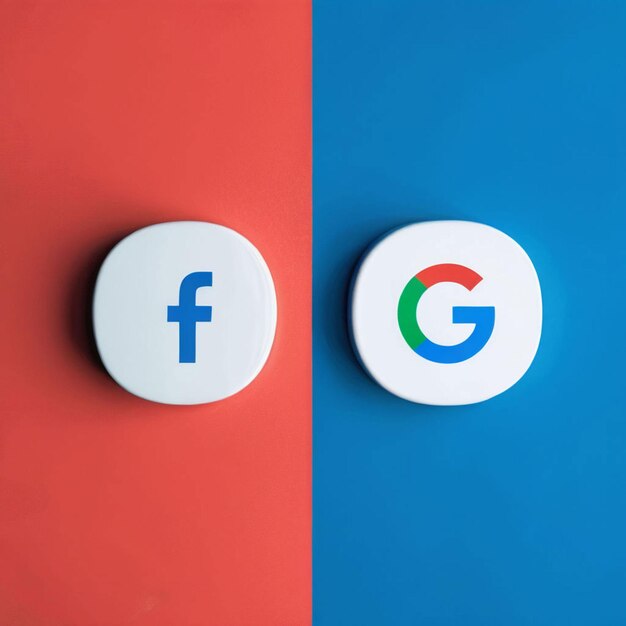
Many businesses had a polarizing view of Facebook Ads and Google Ads until now. The long-standing rivalry between the two companies, which is frequently dramatized by technology media outlets, was interpreted as unquestionable proof that the two platforms were in direct competition with one another and that companies of all sizes had to make the difficult decision of which platform was best for their needs. This false dichotomy is still misleading and confusing to those who are unfamiliar with online advertising. Although the two platforms are sometimes positioned as competitors, nothing could be further from the truth in a practical sense. In order to attain optimal visibility, boost leads and sales, and attract new clients, numerous companies are utilizing the advantages of advertising on Google and Facebook Ads in tandem. They are doing this by implementing distinct tactics that correspond with the features of each platform and experiencing impressive returns on their advertising investments. Facebook ads vs Google ads It’s important to comprehend the main distinction between Google Ads and Facebook Ads before we examine their many features and benefits. Google Search base Ads The biggest and most well-liked PPC advertising network in the world is Google Ads, formerly Google AdWords. It is now synonymous with “paid search” due to its extensive usage. Though other platforms, such Bing Ads, function similarly, the names are used interchangeably. Text-based ads and keyword targeting are the main components of paid search. In the hopes that their advertisements will appear alongside search results for these inquiries, advertisers use Google to bid on keywords, which are particular words and phrases included in search queries input by Google users. The term “pay-per-click advertising” refers to the practice of charging advertisers a set amount of money each time a user clicks on an advertisement. PPC bidding and bid optimization is a complex issue, and beyond the scope of this article, but fundamentally, users are paying for the possibility to find new clients based on the keywords and search terms they enter into Google. Facebook ads: social connection base ads Facebook advertisements are a shining example of “paid social,” or social network advertising. Facebook has the most monthly active users (MAUs) of any social network in the world, making it a fiercely competitive and potentially profitable part of the digital advertising strategies of many companies. While Facebook advertising and Google Ads share certain similarities in that both systems allow advertisers to effectively promote their businesses online, this is where the similarities end. sponsored social helps individuals locate businesses based on their interests and online behavior, as opposed to sponsored search, which helps businesses find new clients through keywords. The main distinction between Facebook and Google Ads is that: Facebook helps potential consumers find you, whilst Google Ads assist you in attracting new ones. The benefits and features of Google AdWords Google is regarded as the de facto leader in internet advertising since it is the most commonly used and well-known search engine in the world. Google provides marketers with access to an unparalleled audience of consumers who are actively searching for products and services, handling over 3.5 billion search queries daily. There are two main networks that Google offers its advertising on: the Search network and the Display network. All of Google’s search functionality is included in the Search network, where advertisers can bid on millions of keywords and phrases to reach potential clients. About 98% of the World Wide Web is covered by the Google Display Network, which gives advertisers more visual ads like banners. This makes it an excellent option for advertisers looking to achieve marketing objectives that aren’t as conversion-driven as PPC ads, like using banner ads to increase brand awareness widely. Google Ads offers numerous advantages, starting with its massive audience reach. Handling over 1.2 trillion searches annually, Google provides advertisers with a vast potential customer base. Its advanced AI, RankBrain, continues to improve search accuracy, enhancing opportunities for businesses to reach relevant users. Google Ads operates on a level playing field, where ad quality and relevance matter more than budget size. Advertisers with well-optimized ads often outperform those with larger budgets but lower-quality ads. Google rewards relevance, making PPC success achievable for businesses of all sizes, especially when focusing on metrics like click-through rate, which is key in evaluating ad performance. Another strength of Google Ads is its diverse range of ad formats. While originally limited to text-based ads, today’s options include ad extensions, sitelinks, social proof, and more, offering customization options for various business types. Google’s tailored formats, such as for hotels and car manufacturers, further enhance the potential for advertisers to effectively engage their target audiences. Facebook ads strengths Facebook ads, as they currently exist, may seem like a scruffy newbie when compared to Google Ads, but Facebook has been honing its advertising offering for a number of years. Facebook Ads is now a leader in the sponsored social media space and a key component of the digital marketing plans of many small business. Facebook Ads offers unparalleled audience targeting thanks to its vast global user base of over 1.55 billion active users. While Facebook’s sheer scale is impressive, its real power lies in the granularity of its targeting capabilities. Advertisers can leverage detailed user data, such as life events, interests, and behaviors, to create highly specific ads tailored to their audience. One notable feature is “lookalike audiences,” which allows advertisers to upload customer data and target new users with similar interests, effectively doubling their reach. Facebook is an inherently visual platform, setting it apart from the text-heavy nature of platforms like Google Ads. The most effective Facebook ads blend seamlessly with the content in users’ News Feeds, allowing advertisers to harness the persuasive power of visuals. This visual focus enables businesses to create compelling, aspirational ads that drive engagement and conversions. One of the biggest win of Facebook Ads is its incredible return on investment (ROI). Despite campaign costs varying based on scope and objectives, Facebook Ads are affordable,
The Dark Side of Influencer Marketing: What No One Is Telling!
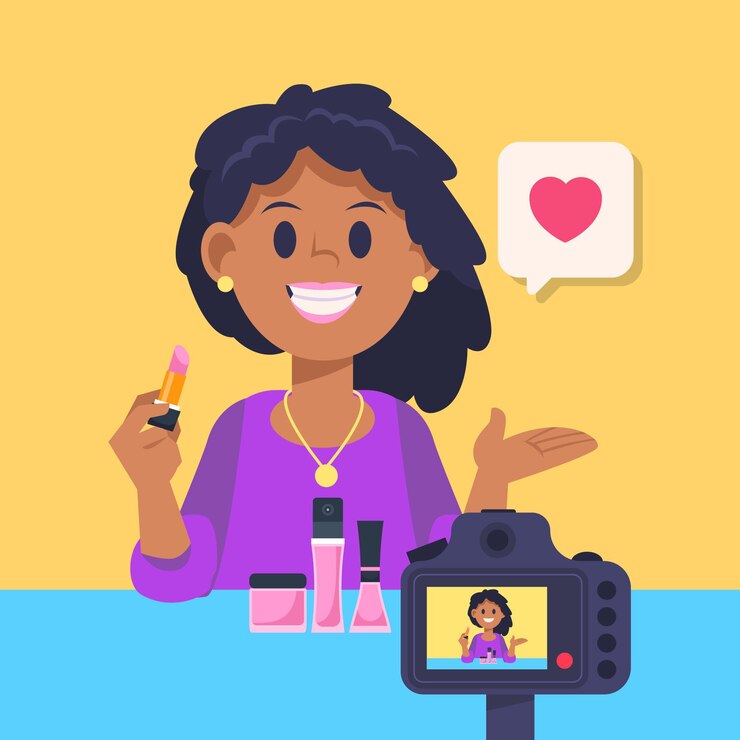
22% of consumers between the ages of 16 and 60 who use social media have bought fake products that influencers have recommended. When you were a child, do you recall your legal guardians telling you to avoid negative influences? In the social media age, that’s far easier said than done. Let’s start by defining an influencer and what they do before discussing the drawbacks of influencer marketing and how it can still be beneficial. They are a person who has developed a devoted fan base in a particular specialty that they actively participate in. The amount of their following is typically determined by the kind of niche they are involved in. Because of their standing, authority, expertise, or connection to their audience, they have the power to affect other people’s purchasing decisions. Influencers are a very attractive channel for businesses to use to market their goods and services through strong brand alliances. Because of this, it is even more important that their followers understand the high instances of influencer fraud that are supported by faulty metrics, such as engagement rates and false followers. The Threat of Influencer Marketing Fraud Given the data presented in this article’s opening paragraph, which indicates that the annual value of counterfeit goods is estimated at $509 billion, it is imperative that more consumers are shielded from deceitful influencers. Thousands of people die every year as a result of products pushed by powerful, shady influencers who have control over an oblivious, ignorant public, these products include but not limiting to unsafe electrical goods, bogus medications and cosmetics, and inferior foods that are all sold online. The degree to which reality and fabrication are blended on social media—a cynical mixture hidden beneath a powerful motivator of social proof—makes it more harmful. Let’s examine the increasingly transparent influencer marketing façade first, beginning with the main black-hat tactic of creating phony followings, then moving on to the more equitable side of real influencers. Metric Inflation and the Rise of Fake Followers Beneath the Colgate grins and never-ending stream of praise, a little investigation will frequently uncover a dark theme among dishonest influencers: an equally phony fan following. These accounts consist of dormant profiles, bots designed to imitate actual users (a problem that has become especially common with the introduction of AI), and even bulk purchases of followers from dubious web services (are you familiar with click farms?). Influencers create the appearance of having a sizable and active audience by building a fictitious following. This also affects the level of interaction they achieve because metrics like likes and comments get skewed. The ability of bots to like and comment on their own these days makes it much more difficult to separate fact from fiction. Fake followers are empty vessels used solely to manipulate metrics and fortify a facade of influence. Why Do Influencers Take This Route? You would probably find someone rather depressing and be reluctant to have a friendship with them if you knew someone who boasted about having IRL pals they made up to boost their social status. The issue is that, compared to real life, where people are more inclined to demand empirical evidence for your assertions, it is far simpler to get away with this kind of fraud online. Naturally, marketers view influencer status as directly correlated with fan base size. For certain influencers, this makes exaggerated follower counts a difficult deception to believe. Many influencers have turned to chasing bigger numbers (ironically, at any costs) in order to be more marketable, to be able to demand higher prices, and to discover a shortcut to governing their niche. However, this comes at the steep expense of inauthentic interactions with an imaginary audience. The Impact of Phony Followers Influencer marketing that depends on exaggerated metrics and phony followers is a surefire way to start a negative chain reaction and a waste of time and money. Companies invest a lot of money in joint ventures for marketing initiatives that reach unresponsive populations and yield little to no interaction. Customers begin to distrust influencers and their advertisements when they consistently avoid or fall for their deceptive advice. However, the damage goes deeper: if online authenticity and reliability are undermined more and more, this has a profound impact on the social media marketing environment as a whole. For sincere influencers who conduct business honestly, it makes things nearly impossible because they find it more and more difficult to establish enduring bonds with their loyal following. The Way Forward The most important component in any influencer marketing campaign should be collaboration. Collaborating with social media influencers in the right way may be a fantastic way for companies to expand their reach and increase awareness. When you start your search, consider these four easy things to ask: There are various online tools that can empower brands and consumers against the onslaught of influencer marketing deviants. These are just three kinds of software out there, but there are many more. These tools analyze follower demographics, engagement patterns, and follower growth rates. They reveal red flags and nasty narratives, such as follower surges or low engagement from a large audience, helping you identify accounts that are potentially fraudulent. Conclusion Don’t let the dark nature of fake followings overshadow the massive potential of influencer marketing. By prioritizing genuine engagement, metrics that matter, and partnering with real influencers, brands can and do achieve jaw-dropping results. For those who commit to transparency and forge actual trust, the future burns bright GET IN TOUCH Getting the right influencer to partner with your business can be a dauting task, leave the heavy lifting to us, book a free 15 mins call on to know our strategy
From AI to Augmented Reality: The Top Marketing Innovations Reshaping 2024

It makes sense for brands to stay ahead of the curve if they want to draw in and hold consumers’ attention. Over the course of the year, a number of new developments are transforming customer engagement strategies for brands by utilizing cutting-edge technology including computer-generated imagery (CGI), augmented reality (AR), and artificial intelligence (AI). Let’s look at how these cutting-edge tools are changing marketing tactics in this post. Starting with the most popular one. AI-Assisted Customization In the field of marketing, artificial intelligence has become a game-changer by providing hitherto unseen chances for large-scale, individualized involvement. Here, scale is important. The way that brands evaluate customer data, forecast preferences, and customize content to specific likes is being revolutionized by AI-driven algorithms. By integrating machine learning and natural language processing, marketers can provide hyper-targeted messaging that engages with audiences on a personal level. Chatbots are one of the most widely used AI applications in marketing. These clever virtual assistants may help organizations improve customer experience, increase conversions, and streamline operations by being integrated into their messaging apps and websites. Furthermore, chatbots are a fantastic tool for marketers to gather more insightful data. Additionally, marketers may provide their target consumers with relevant and interesting material thanks to AI-powered content recommendation engines. Through the examination of user behavior and preferences, these algorithms are able to present tailored recommendations across a variety of digital platforms, such as email newsletters and social media feeds. By providing value-driven material that is catered to specific interests, this focused strategy not only boosts engagement but also promotes brand loyalty. Augmented Reality: Changing the Way Customers Experience It Another game-changing technology that will change the marketing scene in 2024 is augmented reality. With AR, brands can create captivating, interactive experiences by superimposing digital elements over the real environment. The emergence of interactive product visualization tools and virtual try-on experiences has allowed consumers to inspect things in-home before making a purchase. Are you curious how your living room might appear with a new rug? AR is beneficial. Would you like to electronically “try on” an item of clothing? AR is also capable of this. By bridging the gap between the virtual and physical worlds, technology helps shoppers feel more assured before making a purchase. Subsequently, it also helps reduce the number of returns. I’ll admit, this one isn’t perfect yet. There’s nothing like the real thing, but it’s a huge upgrade to just a product photo from 10 angles. Moreover, AR-powered advertising campaigns are creating memorable brand experiences that cut through the clutter of traditional marketing channels. By leveraging AR filters, games and interactive storytelling, brands can engage audiences in playful and immersive ways, driving brand awareness and fostering those highly desired emotional connections. CGI’s Development In Digital Marketing By blending the lines between reality and imagination in marketing efforts, computer-generated imagery (CGI) is pushing the envelope of innovation in 2024. CGI technology has made it possible for businesses to produce aesthetically spectacular and hyper-realistic material that, like it did for me, captivates people and leaves a lasting impact. CGI is also transforming the influencer marketing space by enabling firms to build virtual spokespersons and digital avatars to represent their goods and services. With a degree of control and flexibility that traditional influencers simply cannot equal, these CGI influencers help marketers create customized messaging and uphold brand consistency over all touchpoints. These brand-promoting avatars are still not quite the same as real people producing genuine content for your brand, despite being much more entertaining to watch and simpler to “manage.” Which would you trust more, a CGI avatar or your favorite health influencer who shares before and after photos and gives you the lowdown on their go-to grass-fed collagen supplement that they’ve been testing for the past three months? Conclusion The combination of AI, AR, and CGI is a paradigm change in marketing that opens up countless opportunities for originality, creativity, and consumer interaction. Embracing these technologies and utilizing them to create individualized experiences and convey captivating tales can open up new avenues for brand growth and differentiation in a constantly changing digital environment. But rather than just following the newest trends, it’s critical to approach these technologies with a human creative and strategic perspective, concentrating on providing consumers with value and relevance. I’ll say it again because I firmly think that providing value—whether it takes the kind of inspiration, education, or amusement—will always be more significant than the technology used to do so. GET IN TOUCH The future of AI reality is bright, with significant advancements and applications poised to revolutionize various industries, schedule a free strategy session with us today to design and implement strategies of how AI can help your business.
The Art of Crafting Irresistible Lead Generation Campaigns!

The phrase “lead generation campaign” is more than just a catchphrase in the field of digital marketing; it refers to a critical tactic for drawing in new clients and constructing a strong email list. Your target demographic is drawn in by an appealing lead magnet that sounds like a siren song and offers value. This post explores the skill of developing attention-grabbing lead magnets that turn prospects into devoted followers. Admittedly, not every lead is made equal. Prospective clients who are both financially capable of making a purchase and truly interested in your goods or services are what you need. That’s the point at which B2B lead generating tactics become useful. We’ll look at tried-and-true methods in this article to assist you in luring and developing the best prospects for your company. Defining Quality Leads Quality leads are the lifeblood of any successful sales strategy. They’re not just any contacts in your database; they’re prospects with a high likelihood of becoming valuable customers. A common mistake is confusing quantity with quality. Don’t fall into the trap of chasing after every lead. Focus on those that truly fit your criteria. It’s better to have 10 high-quality leads than 100 low-quality ones. To identify quality leads, use lead scoring systems. Assign points based on demographics, firmographics, and engagement levels. This helps prioritize your efforts on the most promising prospects. Remember, the definition of a quality lead can vary depending on your business model and industry. Regularly refine your criteria based on your successes and failures. What works for one company might not work for another, so it’s crucial to develop a tailored approach. Setting out Goals Developing a comprehensive lead generation strategy begins with setting clear, measurable goals that align with business objectives. By defining SMART goals—specific, measurable, achievable, relevant, and time-bound—you can ensure focus and track progress. For example, a goal might be to “increase qualified leads by 25% in the next quarter.” It’s essential that these goals support broader company objectives, such as revenue growth or market expansion, and that key performance indicators (KPIs) are established to track metrics like conversion rates and cost per lead. Quality leads should be prioritized over sheer volume to improve the chances of conversion. Identifying Your Audience Identifying your target audience is another crucial aspect. This involves creating detailed buyer personas that outline customer demographics, job roles, pain points, and decision-making processes. You should also analyze existing customers to spot patterns and use market research to refine your focus. Audience segmentation is key, enabling you to personalize messaging and marketing strategies. For sales, consider the entire buying committee, including decision-makers and influencers. Finally, evaluating factors like firmographics and technographics helps tailor solutions to your target market’s needs. Together, these steps build a strong foundation for generating high-quality leads that align with your business goals. Creating Valuable and Relevant Content Content marketing plays the major role in generating quality leads. By creating valuable and relevant content, you’ll attract potential customers and establish your company as an industry authority. Focus on addressing your target audience’s pain points and interests through various content types: Consistency is key in content marketing. Develop a content calendar to maintain a steady flow of publications across your chosen platforms. Diversifying your content formats also helps reach a wider audience and cater to various learning preferences, but you should ensure to factor in your audience’s preference and the platform you are sharing it on By leveraging diverse content formats, you’ll increase your chances of engaging potential leads and guiding them through the sales funnel. Email list Lead generation is not complete if there is no email list. By crafting targeted campaigns, you’ll engage potential clients and nurture relationships that drive conversions. Building a robust email list is the bases for successful lead generation without it, who are you going to market to? Start by offering valuable content in exchange for email addresses on your website. Use lead magnets like whitepapers, eBooks, or industry reports to entice visitors to subscribe. Carry out pop-ups and exit-intent forms to capture leads before they leave your site. Once you’ve built your list, segment your list base on necessary category like: Industry, Company size, etc. Segmentation allows you to tailor your messages to specific audience groups, increasing relevance and improving open rates. For example, send product updates to existing customers and educational content to new subscribers. Compelling Email Content Your email content needs to grab attention and provide value to your audience. Remember to test different email elements, such as subject lines, content, and send times, to optimize your campaigns for better performance. A/B testing helps you identify what resonates best with your audience and refine your approach over time. You need to create email marketing campaigns that not only generate quality leads but also nurture them through the sales funnel. At Dgazelle, we specialize in crafting compelling email content tailored to your audience, ensuring you drive conversions and achieve business growth. Choosing the Right Platforms Social media platforms provide significant opportunities for lead generation by identifying, engaging, and nurturing potential clients, ultimately driving business growth. Start by researching where your target clients are active. LinkedIn is typically a strong choice, but platforms like Twitter, Facebook, and industry-specific forums shouldn’t be overlooked. Evaluate platform demographics to ensure they match your target audience, and consider industry trends when making your choice. For example, tech companies may thrive on Twitter, while LinkedIn might be more suitable for professional services firms. Assess content compatibility as well—if your strategy involves videos, platforms like YouTube or TikTok may be worth exploring. Focus on excelling in one or two channels before expanding. Engaging with Leads Once the platforms are selected, create valuable content—articles, infographics, and videos that address your audience’s pain points. Use social listening tools to monitor industry discussions and tailor your approach to individual leads. Share social proof, like client testimonials or case studies, to build credibility. Hosting virtual events or webinars can also attract potential leads. Consistent engagement, including
